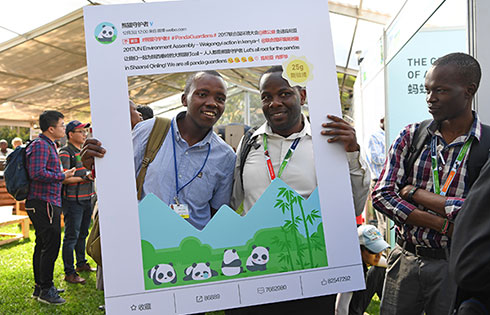Somalia's refugee situation expected to worsen
WASHINGTON - The plight of Somali refugees fleeing the anarchic country is expected to worsen this year as they face possible famine and shortages in clean drinking water, the US Agency for International Development (USAID) said Thursday.
"We do expect that the situation in Somalia will continue to decline and famine conditions are possible," said Nancy E. Lindborg, assistant administrator at the Bureau for Democracy, Conflict, and Humanitarian Assistance of the USAID.
"With food stocks and supplies continuing to decrease, the number of households that can no longer meet their food needs will only increase in the weeks and months to come," she said.
UN High Commissioner for Refugees (UNHCR) Antonio Guterres said earlier this week that more than 50 percent of Somali refugee children spilling into neighboring Ethiopia are suffering from serious malnutrition. For those entering Kenya, the number ranges between 30 percent and 40 percent, which amounts to levels unheard of in decades.
A severe drought in the Horn of Africa, coupled with continuous conflict in the war torn country, are behind this latest exodus from Somalia.
The United States is closely eyeing developments in the embattled African country, as it is home to al Shabaab, which Washington has designated as a terrorist organization.
Testifying before the US House Committee on Foreign Affairs hearing Thursday, Lindborg said there is a concerted international effort to provide food and clean drinking water to Somalis, but there is a funding gap of around 200 million US dollars, in spite of the 349 million dollars provided primarily by the United States, Japan, the United Kingdom and Norway, she said.
The Unites States has recently provided around 48.4 million dollars for the refugees. Still, there is difficulty in reaching nearly 61 percent of those people who live in the country's south and parts of central Somalia because of the presence of armed terrorist groups, Lindborg added.
While more than 90 percent of Somali children that the USAID has accessed have received polio vaccinations, many of those pouring across the border suffer from acute malnutrition, as well as diseases related to lack of sanitation and clean drinking water.
So far, those issues have been addressed in the camps that the USAID is able to access, but concerns remain about those areas that are difficult to reach, she said.
Reuben Brigety, deputy assistant secretary of the US State Department's Bureau of Population, Refugees and Migration said refugee camps in neighboring Ethiopia are filling up at a rapid clip.
"A few weeks ago, Ethiopia opened its sixth camp for Somali refugees and it is already almost full. A seventh is in the works. Djibouti has announced a second camp. And the international community continues to press Kenya to permit expansion of the three-camp Dadaab complex, which is home to over 370,000 refugees, almost all Somalis," he told the House committee.
The Dadaab camps were opened around 20 years ago to house about 90,000 Somali refugees and now house over four times as many -- making it the fourth largest population center in Kenya and the largest refugee camp in the world, Brigety said.
Even in this overcrowded state, more than 1,000 refugees have arrived per day over the past few weeks in search of life-saving assistance, he said.
"Indeed, the refugee situation has worsened dramatically over the last month, with reported new arrivals in June almost double in Ethiopia and triple in Kenya of those in May," he said.





















